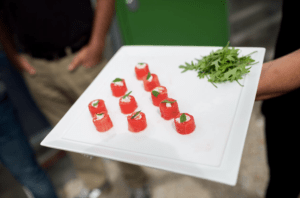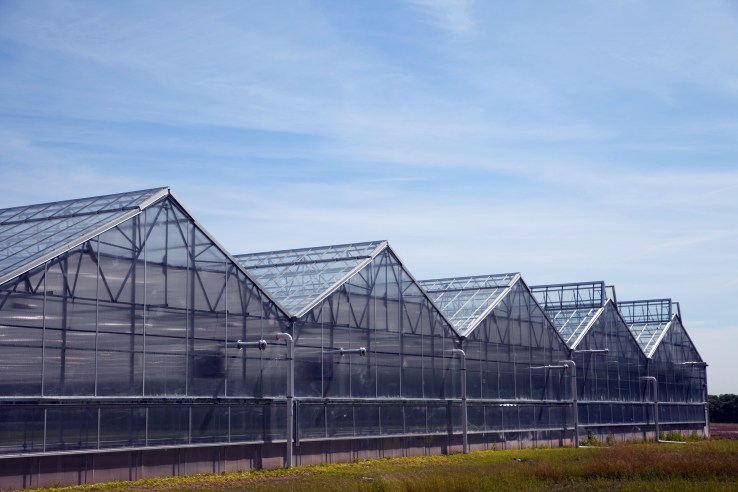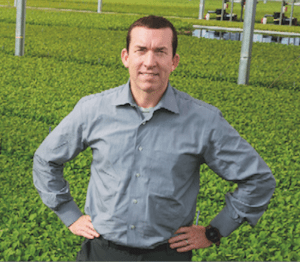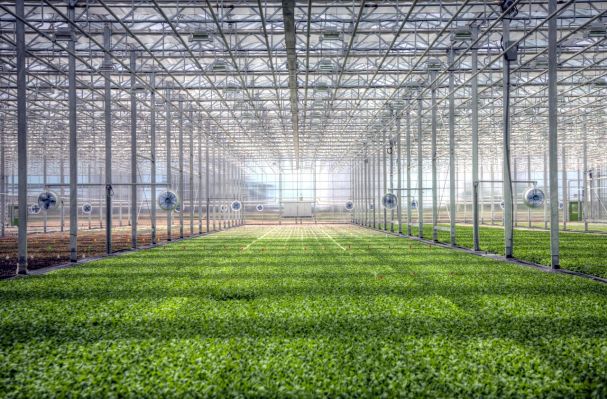Agriculture tech startup BrightFarms has raised $30.1 million in Series C funding to bring its high-tech greenhouses, and fresh produce, across the U.S.
The company is on a mission to make all fresh fruit and vegetables locally, rather than require them to be hauled from long distances or imported from overseas before they are sold at groceries.
Taking a page from the playbook of solar power providers in the U.S., BrightFarms offers customers a long-term, fixed rate on the salad greens and tomatoes it grows in its greenhouses to grocers.

BrightFarms-raised produce.
The startup’s CEO Paul Lightfoot explained that after BrightFarms locks in a “produce purchasing agreement,” it raises funds from various sources including economic development programs and different banks or equity firms to build a new greenhouse.
In effect, a big chunk of the company’s cost of goods is already committed revenue before they open up a greenhouse’s doors and start growing.
The new round of funding was led by Catalyst Investors, and joined by BrightFarms earlier backers WP Global Partners and NGEN.
Catalyst’s Tyler Newton said his firm backed BrightFarms largely due to its business model innovation and ability to “out-execute” other food producers in the U.S.
Consumers definitely want to buy groceries made by local businesses, and to help support jobs that pay a local living wage in their own back yard. According to research by the U.S. Department of Agriculture, local food sales totaled $12 billion in 2014 and are expected to grow to $20 billion by 2019.

A BrightFarms greenhouse that grows tomatoes and salad greens.
“Where the seasons don’t cooperate, we just didn’t have the option to buy local before. So that feels good. But when you taste a tomato or some arugula from BrightFarms, and compare it to something that’s been shipped from out West, there is an obvious taste advantage, too. That’s what grocers want,” Newton said.
BrightFarms is going after a huge market that doesn’t have a lot of competition outside of the states of California and Arizona, today.
America’s farms contribute $177.2 billion, or about 1 percent of the nation’s gross domestic product each year according to the most recent available calculations also from the U.S. Department of Agriculture.
And 90% of the salad greens consumed in the U.S. are produced in California and Arizona, then shipped across the country or exported out of it.
Other agriculture tech startups like AeroFarms or FreightFarms are building out indoor and container-based farms, in urban areas to meet rising consumer demands for locally-produced, and delicious fresh foods.

BrightFarms CEO Paul Lightfoot
But Lightfoot believes that his company’s greenhouses – which take advantage of natural sunlight, obviously—can prove more environmentally sustainable and cost-efficient than indoor farms, and produce more supply than container-based and rooftop farms.
He says that’s because BrightFarms controlled environment greenhouses don’t need to use as much electricity for grow lights and temperature controls as indoor farms. Both are significantly more water efficient than traditional farms, even those using precise irrigation systems.
So far, BrightFarms operates three greenhouses, each employing 25 full-time workers, in the greater Philadelphia, Washington D.C. and Chicago metro areas.
If drought conditions continue, Lightfoot said, the company could someday move into the “salad bowl” state of California, or other agricultural hubs, displacing traditional, and often water-intensive, farms.
But for now it will focus on metro areas where demand for fresh produce is high but there isn’t a lot of arable land or weather to support traditional farms.
BrightFarms’ customers and partners have so far included grocers like Kroger, Ahold USA, Wegmans and ShopRite.
Besides using the new Series C capital to build out additional greenhouses, Lightfoot says the company will explore new crops and is likely to start growing peppers and strawberries in the near future.
